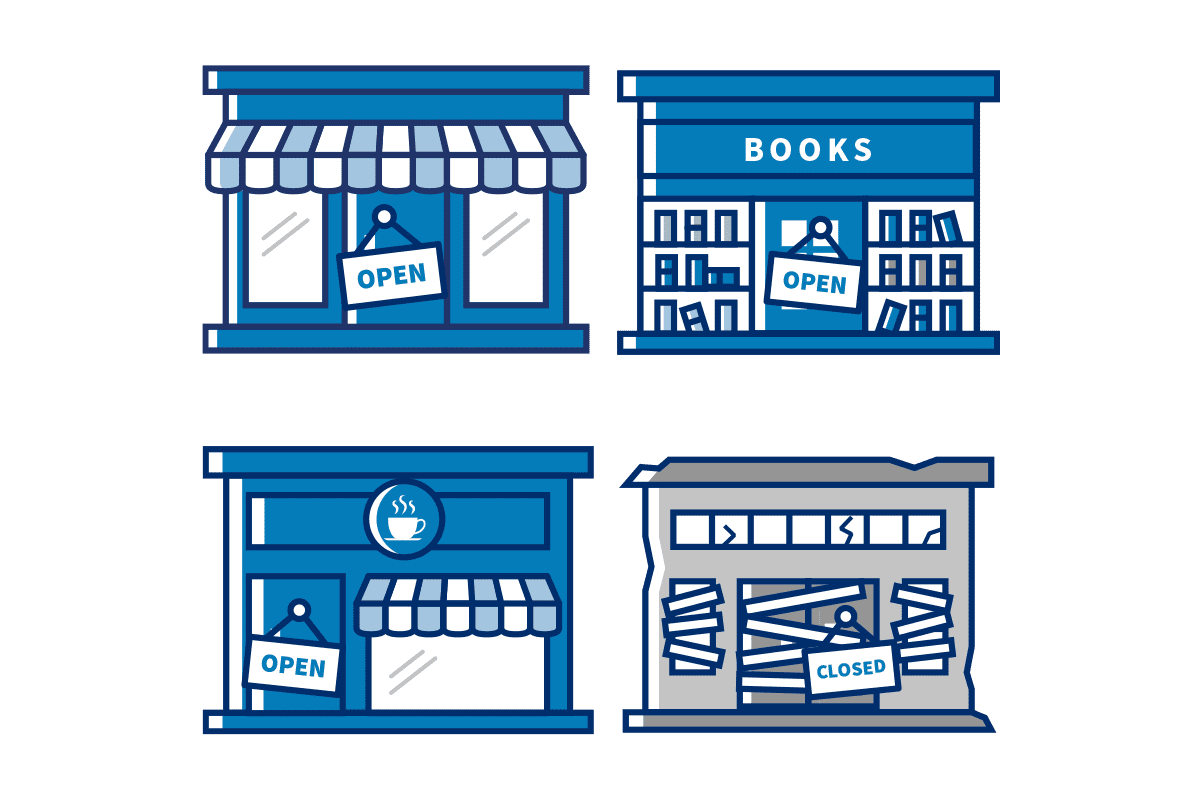Disasters can take many forms and the financial cost of rebuilding after a disaster can be overwhelming. If you’re prepared for emergencies, you’ll be in a better position to recover and continue operations should disaster strike.
From the SBA
Be prepared
Step 1: Assess your risk
Every business has unique vulnerabilities and weaknesses. Knowing which disasters are most likely to affect your business can help you to return to operations faster. A back-to-business self-assessment can help you to assess your risks for common hazards such as hurricanes, wildfires, flooding, or even cyberattacks.

Statistics say that 25% of businesses won’t open again after a disaster.
Step 2: Create a plan
Your response plan is your roadmap to recovery, so it should be tailored to your business’s specific needs and operations. It should address immediate priorities and be easy to access. Checklists and online toolkits are effective resources to help you develop your plan. Consider the following:
- The IRS guide on preparing your business for a disaster
- The Federal Emergency Management Agency (FEMA) emergency preparedness checklist and toolkit
Focus on disasters that pose a realistic risk to your small business. Consult the following resources to lessen the financial impact of disasters and reopen your business quickly.
| Topic | Resource | Tips |
|---|---|---|
|
Hurricanes
|
||
|
Winter Weather
|
||
|
Earthquakes
|
||
|
Tornadoes
|
||
|
Wildfires
|
||
|
Floods
|
||
|
Cyber Security
|
Step 3: Execute your plan
Practice your plan with your staff so you’re ready when a disaster occurs.
Get financial assistance after a disaster
You may be eligible for a low-interest disaster recovery loan through the SBA for damaged and destroyed assets in a declared disaster. These include repair and replacement costs for real estate, personal property, machinery, equipment, inventory, and business assets. Check to see if one of these loans apply.
- Home and Property Disaster loans
- Economic Injury loans
- Military Reservist Economic Injury Disaster loans
Submit your SBA disaster loan as soon as possible, then ask your SBA representative about increasing your physical damage loan for mitigation purposes. There is no cost to apply, and you are under no obligation to accept a loan if approved.
Advice and training
Visit ready.gov/business or contact SBA’s Disaster Assistance Customer Service Center at 1-800-659-2955 (TTY: 1-800-877-8339) or disastercustomerservice@sba.gov for access to emergency toolkits and guidance.
FEMA’s Organizations Preparing for Emergency Needs (OPEN) is a self-guided training designed to teach small business owners and operators how to identify risks, locate resources, and take preparedness actions.






